Black tea history story black tea originated from which country ordinary black tea where produced what
Etymology
Thirty years after the first commercial import of 143 pounds of tea, Britain set up its first tea procurement office (then known as a factory) in Guangzhou (now Guangzhou) in 1699. In the same year, John's founder, Reverend King William III, wrote about various tea options available in England, "the first one is Wuyi Tea …" Those who are sick, in China are still very careful to protect their health, if they are weak, limit themselves to this kind of tea. " (1). He went on to describe that the other teas were all green.
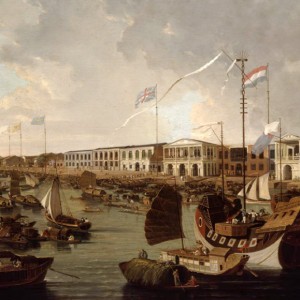
Interestingly, in Fujian and Guangdong, Wuyi Oolong is considered to be a safe tea for the weak and the elderly, and is also used to treat minor ailments (as was still the case when I was very young). The spelling of "Wuyi" is "Bohea", which is the transliteration of the same Chinese word as "Wuyi" in Xiamen dialect. The Chinese translation of the word "Oolong" is-wulong-which literally means "black dragon". Black tea, now known as black tea in the West, has always been called "red tea" in the far East.
A few years before the founder's statement, a tea advocate and monk named Zhao Diquan wrote a song in Wuyi Tea, "ships come here from the West (Xiamen) to buy this tea every year." So the appearance of Anxi tea Wuyi tea, roasted before baking. The two kinds of tea have become almost the same. (2) this shows that this is a kind of oolong tea. At that time, the black tea imported from the West was Wuyi style oolong tea, not black tea that had not yet been invented at that time. To this day, Anxi is rarely involved in the production of black tea. In the following century, black tea appeared, and the West classified it as black tea simply because it was as dark as Wuyi oolong tea.
Wuhai was the "black tea" consumed by Westerners until the mid-18th century, when kung fu (also known as kung fu) and race names began to appear on store menus and family accounts in London. These names are more associated with black tea. In 1732, the county governor of Chongon (Wuyi) wrote in his diary (4), "at the end of the year, the ninth bend (river, which runs through Wuyi) is on the mountain, where there is a village called Xingcun (Xingcun) where tea merchants gather. Some people come from outside the county. And Jiangxi Guangxin (5), with their product-a kind of black tea that brews red. They call it Jiangxi Wu. They sell their products to local wholesalers in private. " This may be the first reliable mention of the existence of black tea. Xingcun is a wholesale center for tea merchants, who trade with tea merchants, that is, export companies. It is very possible that kung fu and races are either different local versions of Jiangxi Wu, or innovative at the same time. From this, it can be inferred that black tea was probably invented in this area or neighboring areas before 1732.
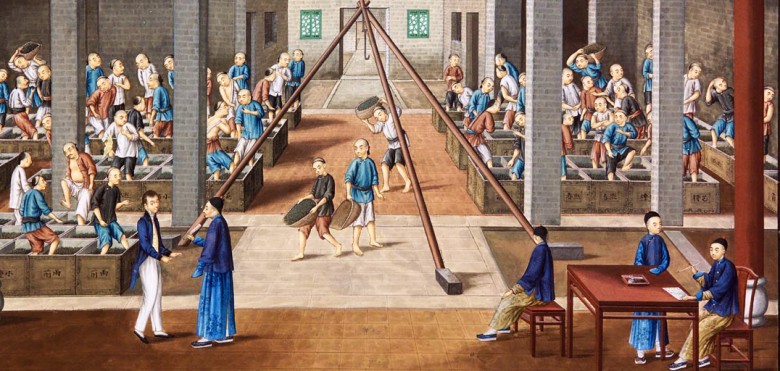
Everything for the economy.
Compared with oolong tea, black tea not only has a simpler production process and requires less fuel and labor, but also black tea can use leaves that are younger or older than oolong tea, so that the annual harvest will be more. This is a logical solution to meet the demand for the number of exports and low costs. Soon, the process spread to areas that were not critical or well-known tea producing areas, but were close enough to the export port of Canton. According to some county records, from the 1830s, tea merchants from Guangdong and Jiangxi went to their areas to persuade people to make black tea. I believe they did it earlier in other places.
In 1784, young British Prime Minister William Pitt introduced the historic tax reduction and exemption Act, which reduced the tea tax from 119% to 12.5% to combat tea smuggling. He was successful. Not only can the public afford to buy tea, but also the government's tax revenue has increased. The West mainly imported tea from Britain, from 18.9 million pounds in the 1880s to 26.7 million pounds in the 1890s, and did not stop. Without the existence of black tea with rapid turnover and the expansion of production base, it would be impossible to meet such demand. By the mid-1850s, almost all the provinces south of the Yangtze River had become the producing areas of black tea.
Robert Fortune and the East India Company are here.
This production process was later introduced by the British from China and used in the newly established plantations in their Indian colony of Assam. The Dutch did the same in Indonesia, even earlier. From the very beginning, Britain planned to implement it on a large scale; tea plantations became plantations; scattered local production huts in Fujian became centralized factories in Assam; and soon, manual processing was replaced by machines-all in line with the spirit of the industrial revolution at that time. Since 1888, India's black tea exports have begun to replace China, and at the turn of the century.
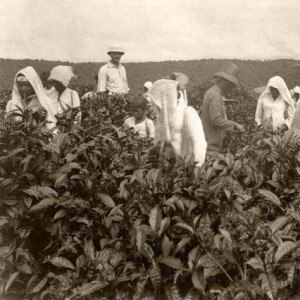
As Europe continued to colonize the rest of the world, the availability of labour resources in the conquered lands, coupled with the scalable Indian model, made the establishment of large tea gardens economically viable. Nepal, Bangladesh (now Bangladesh), Ceylon (now Sri Lanka), Indonesia, Kenya and Nyasaland (now Malawi) have all joined the export of tea at different historical periods to meet the growing demand for tea. These countries are still exporters of black tea today. Recently, even the United States and Australia have established products of mass market quality. Only a few people have formed the habit of drinking tea by themselves. For example, more than 97% of the tea produced in Sri Lanka is exported. It looks strange, but maybe their wages are so low that they can't even afford the ex-factory price. (more on the social economy of tea production)
Although one trend of development in China follows the path of industrialization, another continues to focus on the skills of craftsmen. Each place has its own characteristics, including taste, craftsmanship, gardening and craftsmanship. This becomes the category of kung fu black tea (black tea that requires effort and mastery). The British like the prestige of the name so much that they still use it on some labels, although it does not necessarily reflect the quality of the content-time, which is the Romanization of kung fu in Xiamen dialect.
Important Notice :
前街咖啡 FrontStreet Coffee has moved to new addredd:
FrontStreet Coffee Address: 315,Donghua East Road,GuangZhou
Tel:020 38364473
- Prev
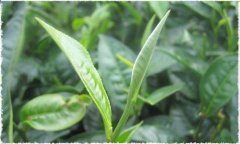
Yunnan black tea Yunnan red brewing method Yunnan black tea how many degrees of water to brew the best cover bowl purple sand pot
Dianhong refers to the black tea produced in Yunnan. Yunnan is the abbreviation of provincial name, which is more commonly used in official documents in the past. Among the high-quality black tea varieties produced in China, Dianhong is probably the most affordable. Especially when the excellent Fujian black kungfu begins to be recognized and the price continues to rise. In this review, we will focus on whole-leaf, traditional varieties, rather than other orthodoxy
- Next
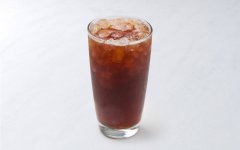
How to process black tea the whole process of black tea production process video of fermentation process technology
Kung Fu black tea and some orthodox works are much heavier than the broken leaves that some people are used to. Therefore, the idea of putting a teaspoon of tea into a cup may not work very well. You can start with 3 grams per cup. Taste contrary to popular belief, not all serious tea drinkers are opposed to adding sugar and milk to black tea. But most of the time I drink directly. A cup of bubble
Related
- What effect does Italian American coffee with filter paper have? Will coffee taste better if it is put on filter paper at the bottom of the powder bowl?
- What is the color difference in coffee beans? What are the characteristics of honey processed coffee beans? Why are the anaerobically treated coffee beans uneven in color?
- How does novice Xiaobai quickly get started and make coffee? Newbies learn to make coffee by hand and share the specific steps and process process!
- Costa tea has a shelf life of 100 years?! Expert: Unable to verify
- It's a huge uproar! American milk addition was rejected by Manner employees?!
- Mocha pot coffee bean recommendations| How fine and how much powder should be used for grinding? What parameter ratios do I need to use to make milk with Mocha pot coffee?
- What are the characteristics of the world's top ten coffee beans treated with Costa Rica honey? How to make black honey kadura from Tarazhu Pilon Processing Plant taste good?
- How to make deep-roasted coffee? What grinding water temperature does authentic Jamaica Blue Mountain No. 1 coffee use to brew it well?
- Selected high-grade rose summer coffee flavor tasting guide Why Panama rose summer has the aroma of flowers and fruits
- What equipment does a novice Xiaobai need to buy to learn to make coffee? Filter cup electronic scale bean grinder manual flushing pot purchase guide

